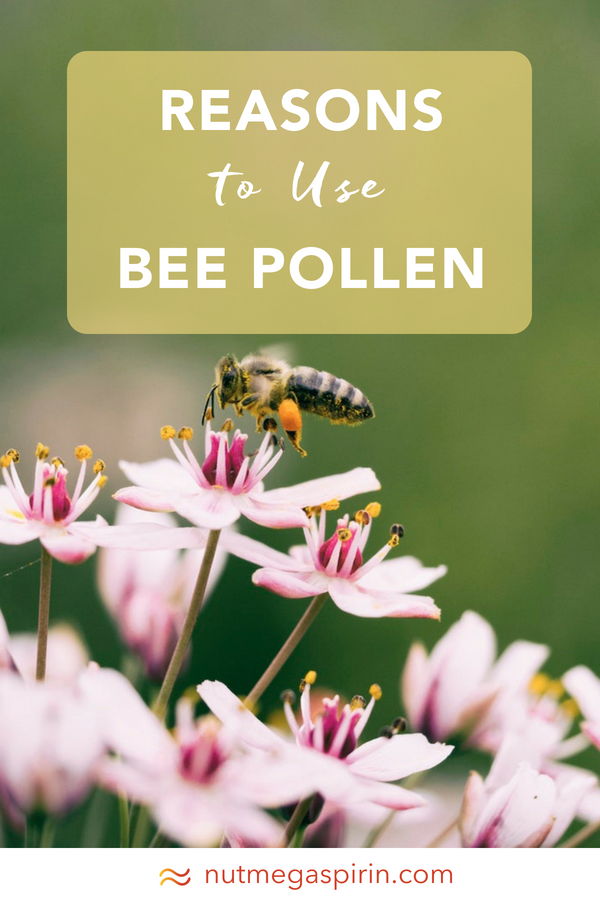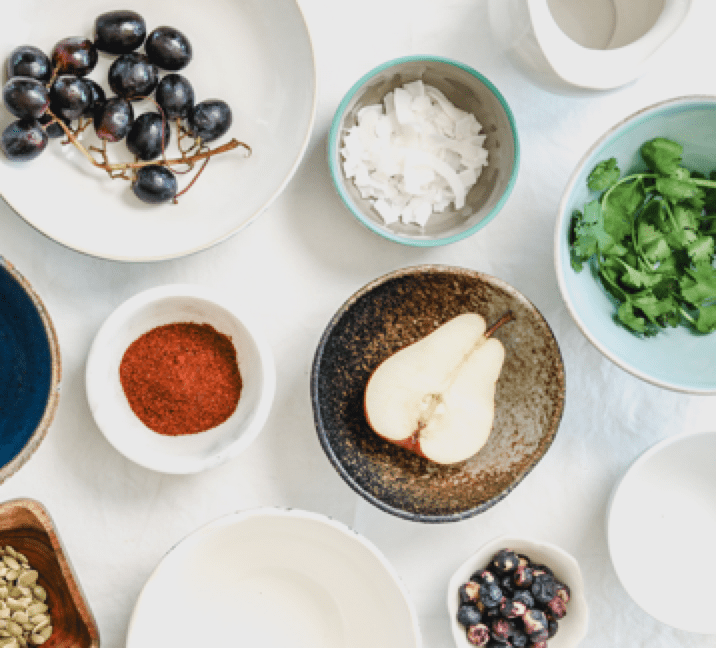Reasons to Use Bee Pollen

How It Works
ANTI-INFLAMMATORY POWERS
The anti-inflammatory effects of bee pollen (thanks to the flavanoids) have been compared to NSAID drugs like Neproxen! Get on track to turning off inflammation with the addition of bee pollen. Best when practiced in conjunction with a whole-food diet, regular exercise and some green juice!
ENHANCED ENERGY LEVELS
A wide range of nutrients found within bee pollen make it a wonderful natural energizer. The carbohydrates, protein and bee-vitamins can provide the boost you need to power through the day. Anti-stress effects also work to fight fatigue, improve stamina and nourish your adrenals.
BYE-BYE ALLERGIES
Pollen reduces the presence of histamine - everything from asthma, allergies and sinus problems have the potential to be cleared with the introduction and use of bee pollen! It is also wonderfully effective against a wide range of respiratory diseases.
NEXT-LEVEL IMMUNE SUPPORT
Bee pollen supports a healthy digestion and intestinal flora - which builds a strong immunity. Bee pollen has antibiotic-type properties that can help protect the body from contracting viruses, and since it's also rich in antioxidants - bee pollen may protect cell oxidation from free radicals.
BETTER DIGESTION
In addition to healthful vitamins, minerals and protein - bee pollen also contains enzymes that can aid in digestion. Enzymes assist your body in breaking down and absorbing all the nutrients from your healthy food choices. The healing properties of bee pollen are also beneficial for decreasing inflammation in the gut, which all-in-all helps you achieve better digestion.
HOW TO TAKE BEE POLLEN
It's time to naturally boost your nutrient intake! Bee pollen is a functional food and works best when taken at mealtime and especially with fruit (the fruit fibres reinforce the positive activities of pollen).
If it's your first time with this new functional food - you must start slow - to ensure it's a fit for you.
Start with just 1 or 2 granules - place them under your tongue and allow them to dissolve (or chew them). If you do not experience a reaction, you can now double the amount of granules you consume on day two. Continue this for at least a week to build up your tolerance.
For general health and well-being, 1 - 2 heaping teaspoons of the raw granules per day will be more than enough. You can mix them into a fresh pressed vegetable juice, add them to your smoothie, yogurt or enjoy as is! (Or enjoy a teaspoon of this therapeutic raw honey each day!)
Bee sure to support local bee products! You can find bee pollen in a fresh, frozen or dehydrated form at the farmers market or directly from the beekeeper!
Thanks to the world-wide net - you can now also find high quality bee pollen on Amazon - some of my favourites are this Organic Bee Pollen from Honey Bunny (Product of Canada) and this Bee Pollen from Dutchman's Gold (Product of Canada & the USA).
Get super bee-powers from this therapeutic grade raw honey - formulated with additional royal jelly, bee pollen and bee propolis for increased energy and mental clarity. Just one teaspoon a day is your therapeutic dose!
POTENTIAL SIDE EFFECTS OF BEE POLLEN
It’s safe for most people to take bee pollen by mouth for a 30- to 60-day period, depending on the dose.
The biggest safety concerns with bee pollen are allergic reactions - which may be an issue for people who are allergic to pollen. If you notice itching, swelling, shortness of breath or light-headedness after consuming bee pollen, discontinue use until you’ve spoken to your health care provider.
Pregnant women should avoid bee pollen.
What You’ll Need
Difficulty
nor hard Somewhat
challenging Very
challenging
Story
If you're familiar with raw honey and some of it's outstanding benefits - a huge reason as why raw honey is the bees knees, is because this 'apitherapeutic superfood' naturally contains bee propolis, royal jelly and bee pollen!
Raw honey makes for a great natural sweetener, which you can read more about here - but this isn't a blog on honey. Today I am going to share with you some of the amazing properties of the apitherapeutic superstar; BEE POLLEN.
Apitheraphy is a branch of alternative medicine that uses bee products such as honey, pollen, bee bread, propolis, royal jelly and bee venom.
The vibrant, sweet and floral tasting granules - known as bee pollen, actually contain almost all of the nutrients required for the human body to thrive. There is a theory that if the world ended, and we still had access to bee pollen - that we could survive off just a teaspoon a day.
I don't want to be around to test that theory.
BUT WHAT EXACTLY IS 'BEE POLLEN'?
Our little bee friends are quite the workers - when they're out-and-about pollinating, they collect hundreds and sometimes millions of 'pollen grains', from just a single flower! These pollen grains will naturally stick to the tiny hairs on the back of their hind legs, and our bee friends will secrete a sticky substance which helps to pack and bind the collected pollen into a granule.
Carrying just two little granules at a time, they travel back to their hive - the pollen is now packed into honeycomb cells, and thin layer of honey and beeswax is applied to seal in the granules before some anaerobic fermentation goes on. This end bee-product is known as "bee bread" and this formula functions as a protein source for the colony.
THAT'S COOL. BUT HOW ON EARTH IS IT HARVESTED FOR OUR USE?
Beekeepers will often attach a pollen trap in the doorway of a hive, aka a small box that is fitted with a screen, which allows the bees to enter - but will harmlessly remove the pollen granules from their hind legs. Beekeepers are careful to collect only small amounts of pollen from any given hive, to ensure that the bee's food source in not deprived.
One bee colony will produce 2-15 pounds of pollen each year or 50-250 grams each day.
Pollen ranges in both colour and size- so each granule is completely unique. You can find bee pollen is found in fresh, frozen and dehydrated forms. All-in-all, bee pollen contains over 250 substances; including amino acids, lipids, vitamins, macro and micronutrients, and flavonoids.
Talk about some bee therapy.
HERE'S THE ACTUAL 'COMPOSITION' OF BEE POLLEN:
- 30 percent digestible carbohydrates
- 26 percent sugars (mainly fructose and glucose)
- 23 percent protein (including 10 percent of essential amino acids)
- 5 percent lipids (including essential fatty acids)
- 2 percent phenolic compounds (including flavonoids)
- 1.6 percent minerals (including calcium, phosphorus, magnesium, sodium, potassium, iron, copper, zinc, manganese, silicon and selenium)
- 0.6 percent water-soluble vitamins and acids (including B1, B2, B6 and C)
- 0.1 percent fat-soluble vitamins (including vitamins A, E and D)





